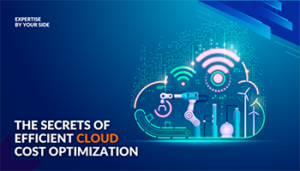Introduction
In software development, staying ahead requires adopting efficient practices. One such practice is Continuous Integration (CI), a crucial component of the DevOps methodology. In this blog, we’ll break down the basics of CI in simple terms and explore how it enhances the development process.
What is Continuous Integration?
Continuous Integration is a development practice that encourages developers to regularly integrate their code changes into a shared repository. The primary goal is to detect and address integration issues early in the development cycle, ensuring a smoother and more reliable software delivery process.
Key Concepts of CI
- Automated Builds: CI relies on automated build tools to compile and assemble code automatically whenever changes are pushed to the version control system. This ensures that the software is always in a build-ready state, reducing the likelihood of integration problems.
- Frequent Code Integration: Developers integrate their code changes into the main repository multiple times a day. This prevents the accumulation of conflicting changes, making it easier to identify and resolve issues promptly.
- Automated Testing: CI incorporates automated testing, where a suite of tests is executed automatically after each code integration. This helps in quickly identifying bugs or issues introduced by new code changes.
- Continuous Feedback: CI provides continuous feedback to developers by generating reports on build and test results. Immediate feedback allows developers to address issues promptly, reducing the time and effort required for bug fixing.
Implementing CI in DevOps
- Version Control System (VCS): Choose a reliable version control system like Git or SVN to manage and track changes to the source code.
- Build Automation: Use build automation tools like Jenkins, Travis CI, or GitLab CI to automate the process of compiling and building the code.
- Automated Testing: Develop a comprehensive suite of automated tests, including unit tests, integration tests, and end-to-end tests. Integrate these tests into the CI pipeline to ensure that every code change undergoes thorough testing.
- CI Server Setup: Set up a CI server that monitors the version control system for changes and triggers the automated build and test processes.
- Continuous Deployment (Optional): For a complete DevOps cycle, consider implementing continuous deployment to automate the deployment process after successful CI.
Benefits of CI in DevOps
- Early Issue Detection: CI helps catch integration issues early in the development process, reducing the chances of bugs reaching production.
- Increased Collaboration: Regular code integration fosters collaboration among team members, leading to a more cohesive and efficient development process.
- Faster Feedback Loop: Immediate feedback from CI processes allows developers to address issues promptly, accelerating the overall development cycle.
- Quality Assurance: Automated testing ensures that the software maintains a high level of quality with each code change.
Conclusion
Continuous Integration is a cornerstone of modern software development and plays an important role in the DevOps methodology. By implementing CI practices, development teams can achieve faster, more reliable, and higher-quality software delivery. As you embark on your CI journey, remember that it’s not just a tool or process but a mindset that prioritizes collaboration, automation, and continuous improvement.





